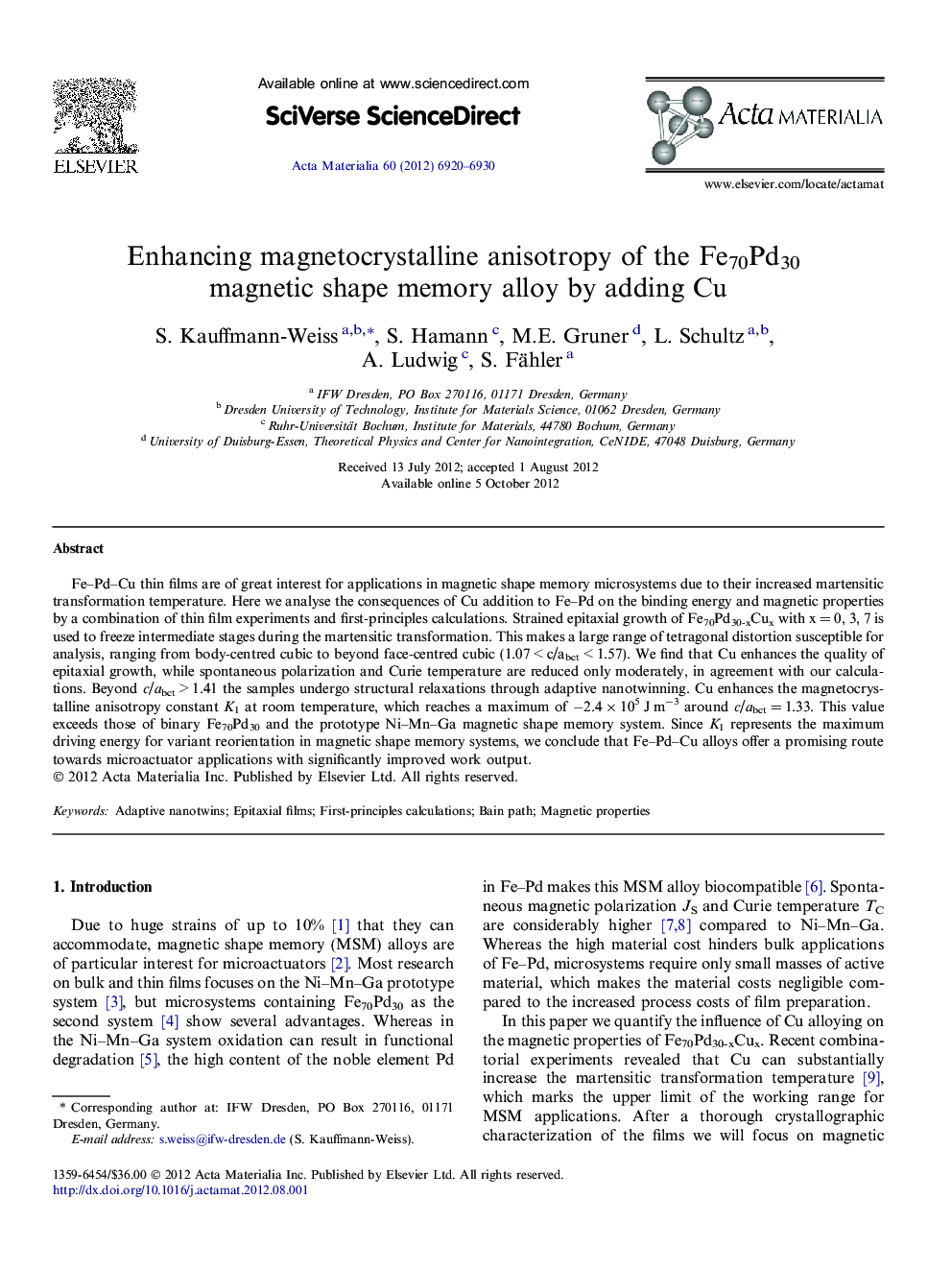| Article ID | Journal | Published Year | Pages | File Type |
|---|---|---|---|---|
| 1446443 | Acta Materialia | 2012 | 11 Pages |
Fe–Pd–Cu thin films are of great interest for applications in magnetic shape memory microsystems due to their increased martensitic transformation temperature. Here we analyse the consequences of Cu addition to Fe–Pd on the binding energy and magnetic properties by a combination of thin film experiments and first-principles calculations. Strained epitaxial growth of Fe70Pd30-xCux with x = 0, 3, 7 is used to freeze intermediate stages during the martensitic transformation. This makes a large range of tetragonal distortion susceptible for analysis, ranging from body-centred cubic to beyond face-centred cubic (1.07 < c/abct < 1.57). We find that Cu enhances the quality of epitaxial growth, while spontaneous polarization and Curie temperature are reduced only moderately, in agreement with our calculations. Beyond c/abct > 1.41 the samples undergo structural relaxations through adaptive nanotwinning. Cu enhances the magnetocrystalline anisotropy constant K1 at room temperature, which reaches a maximum of −2.4 × 105 J m−3 around c/abct = 1.33. This value exceeds those of binary Fe70Pd30 and the prototype Ni–Mn–Ga magnetic shape memory system. Since K1 represents the maximum driving energy for variant reorientation in magnetic shape memory systems, we conclude that Fe–Pd–Cu alloys offer a promising route towards microactuator applications with significantly improved work output.
